Managing mice in pastures to protect your crops in Spring
30 Aug 2021
By Callen Thompson – Senior land services officer- mixed farming
Managing mice in pastures will be vital to reduce mouse numbers in Spring. Although we cannot use zinc phosphide bait in pasture, we can manage mice through grazing management.
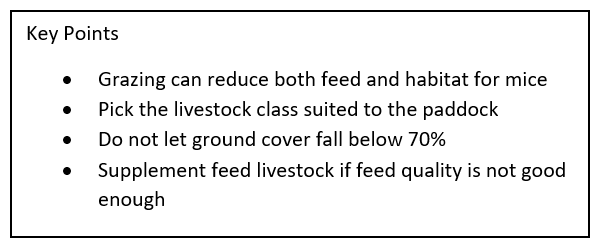
Most pasture paddocks in the Central West of NSW have remnant summer grass present that is both tall and dense. This provides shelter and safety for mice. Rain through winter has led to a good population of winter annuals like ryegrass and barley grass. These grass species will provide a feed source for mice once they run to seed. Legumes like clover and medics could also provide a feed source when they set seed, but we are seeing a much lower legume population in our pastures this season.
So, when we set out to graze these paddocks, we need to think about reducing habitat (old, dry summer grass) and reducing mice feed sources (new winter annual grasses, legumes and summer grass seed).
Which paddocks to graze?
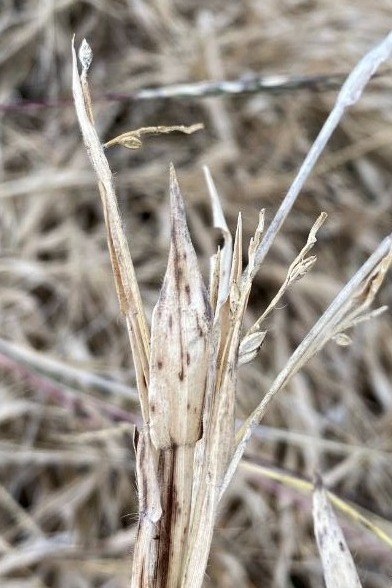 Firstly, you need to decide which paddocks are the highest priority. Paddocks bordering cropping paddocks (or hay and grain storage) should be high priority. Have a look at the amount of cover from dry grass and the amount of annual pasture that is coming through. In some cases, the dry grass may be inhibiting annuals from germinating. Also look for seed and seed heads both on the ground and on standing grass.
Firstly, you need to decide which paddocks are the highest priority. Paddocks bordering cropping paddocks (or hay and grain storage) should be high priority. Have a look at the amount of cover from dry grass and the amount of annual pasture that is coming through. In some cases, the dry grass may be inhibiting annuals from germinating. Also look for seed and seed heads both on the ground and on standing grass.
Figure 1: It is important to inspect pastures to see how much seed is present. This liverseed plant has been stripped of seed by mice already.
Producers should aim to get an understanding of existing mouse numbers. Look for active mouse holes in the pasture paddock. Mouse cards can be used to monitor populations, but they may not show a complete picture as there will be competing food sources. GRDC has some useful information here: Know your mouse numbers - GRDC.
Reducing food source
Feed source can be existing seed from summer species or potential seed from annual winter grasses. If your paddock has existing seed and seed heads you may look at grazing the paddock to reduce this seed. Sheep will do a much better job of picking seed off the ground, but they will generally only pick up seed heads or larger seeds. Cattle may eat standing seed heads but will not graze seeds from the ground. Using sheep or cattle at high intensities will trample seed into the soil, reducing availability and increasing the rate of breakdown and potential germination, especially if environmental conditions are suitable.
Figure 2: When grass is short, mouse holes are easy to find. It is much harder in long, dense grass
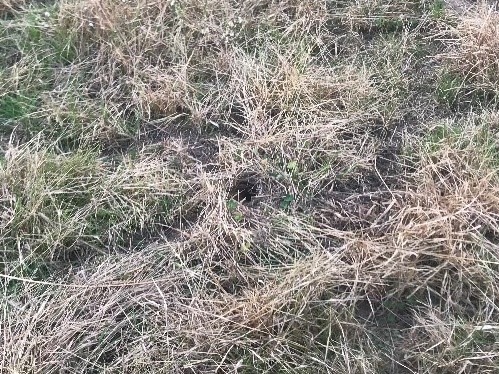 Potential seed will come from aerial seeding legumes and annual grasses. These species are generally high-quality feed and, dependant on height and growth stage, suitable for sheep or cattle. The level of dry grass will dictate the potential livestock production and how heavily you can graze the paddock. If you have a lot of dry grass and little green grass, production may be limited, but you can graze the paddock harder (high intensity/longer) because the dry grass will still provide ground cover. If there is only a small amount of dry grass and a lot of green grass, livestock production will be increased, but you will need to manage grazing to ensure you do not over graze and reduce ground cover.
Potential seed will come from aerial seeding legumes and annual grasses. These species are generally high-quality feed and, dependant on height and growth stage, suitable for sheep or cattle. The level of dry grass will dictate the potential livestock production and how heavily you can graze the paddock. If you have a lot of dry grass and little green grass, production may be limited, but you can graze the paddock harder (high intensity/longer) because the dry grass will still provide ground cover. If there is only a small amount of dry grass and a lot of green grass, livestock production will be increased, but you will need to manage grazing to ensure you do not over graze and reduce ground cover.
Reducing habitat
When looking to reduce mouse habitat we are looking to remove tall dry grass, which will reduce the ability of mice to shelter and forage for food safely. Tall dry grass will be poor feed quality and in most cases, unsuitable for sheep. Cattle may be able to utilise the grass, but feed quality will not be high enough for growing stock. Dry cows would be a much better option than weaners, for example.
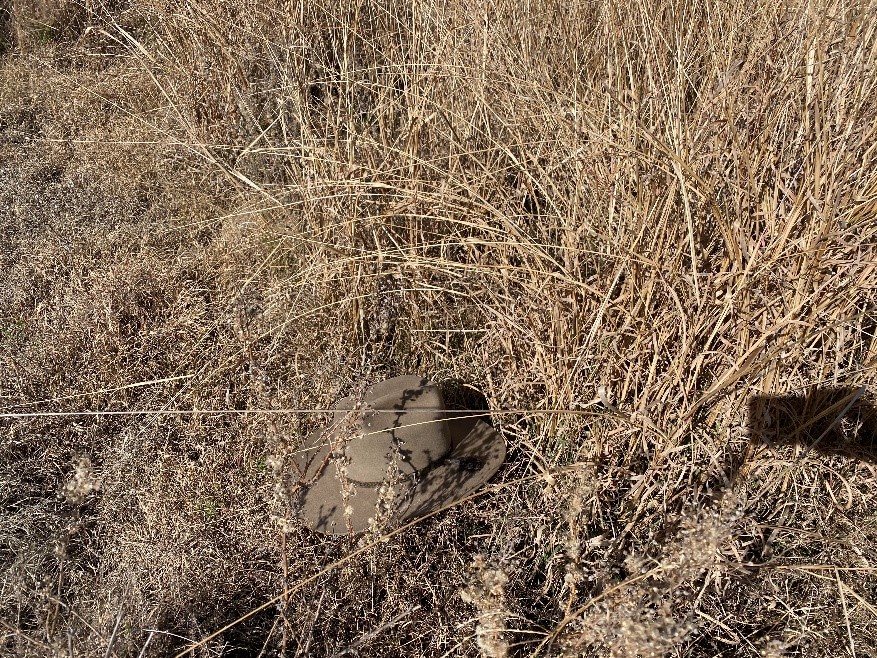 In some cases cows may need to be supplemented with a protein source so that they maintain condition. Additional protein helps to improve feed intake as it feeds the rumen microbes that break down the dry feed. This has the added benefit, that cattle will eat more dry grass, quicker. Again, it is important that the paddock is not grazed for too long, to ensure groundcover is maintained.
In some cases cows may need to be supplemented with a protein source so that they maintain condition. Additional protein helps to improve feed intake as it feeds the rumen microbes that break down the dry feed. This has the added benefit, that cattle will eat more dry grass, quicker. Again, it is important that the paddock is not grazed for too long, to ensure groundcover is maintained.
Figure 3: Dry feed can be low quality, so it is important to select the appropriate stock class and if needed supplement their diet.
It is also important that cattle are in good condition before they enter the paddock, as even with a protein supplement, feed quality of the pasture may be too low to maintain their current condition. If in doubt, it may be worth taking a feed test and formulating a supplement ration. This is especially important if cattle are close to calving as a rapid reduction in feed quality could cause pregnancy toxaemia. Check out the link below if you would like more information on feed testing: https://www.youtube.com/watch?v=VRBYVlfYCl8&list=PLbeXAybNsB_FoK0p_pGClLwgpy8povdH4&index=24
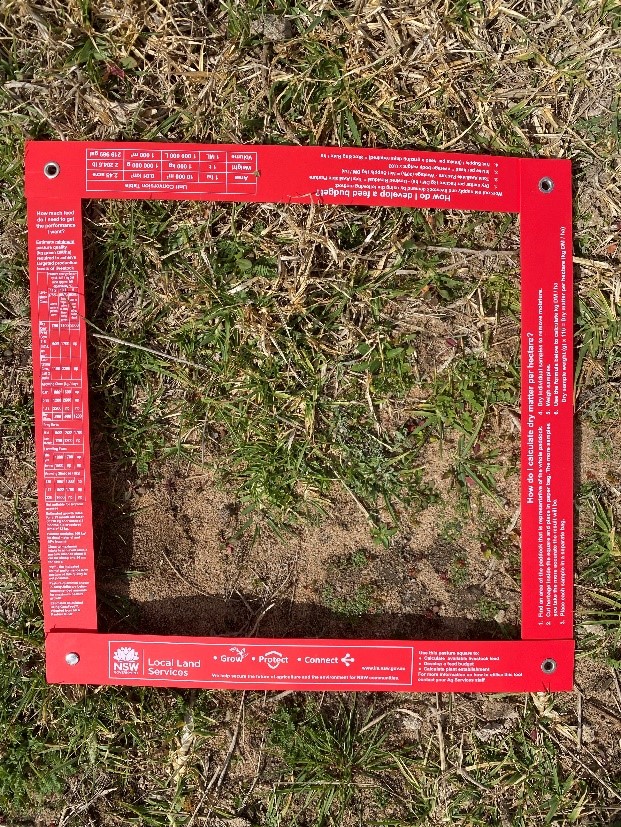 Figure 4: Maintaining over 70% ground cover will help to reduce erosion and ensure pasture health. On sloping country 90% ground cover should be maintained
Figure 4: Maintaining over 70% ground cover will help to reduce erosion and ensure pasture health. On sloping country 90% ground cover should be maintained
Conclusion
By reducing habitat and feed sources, we are making it much harder for mice populations to rapidly increase. Grazing can help to achieve this but we must be mindful of maintaining stock condition and maintaining ground cover. Grazing pasture paddocks is just one tool. It is extremely important that producers monitor the cropping paddocks for mice regularly and be ready to apply a registered zinc phosphide bait if the need arises. You may also use the above techniques to reduce habitat and feed around hay and grain storage, sheds and infrastructure.
If you would like further information on mouse control, speak to your local Ag Advisor or check out the GRDC website Mouse management - GRDC. For information on grazing management, speak to your local Ag Advisor.